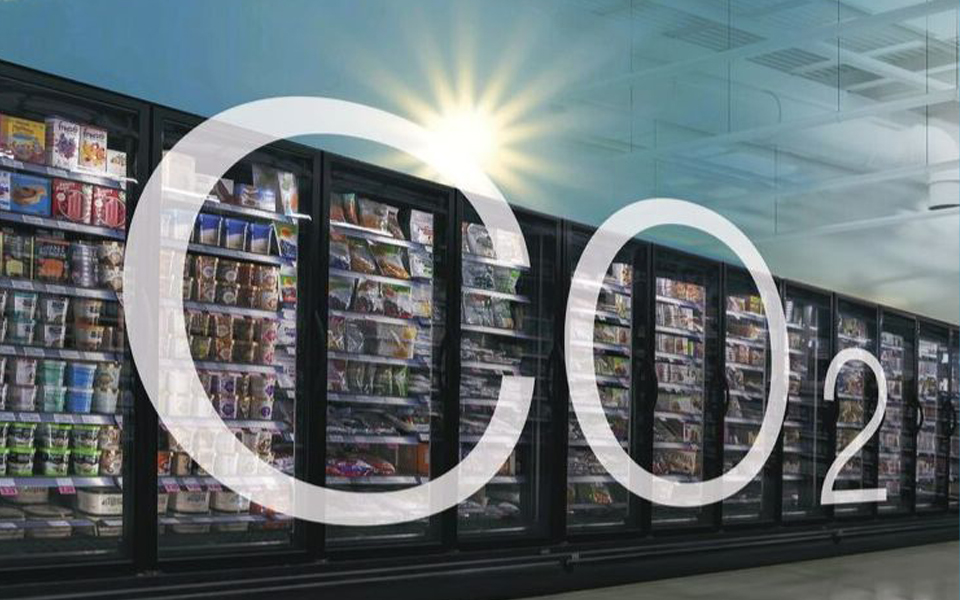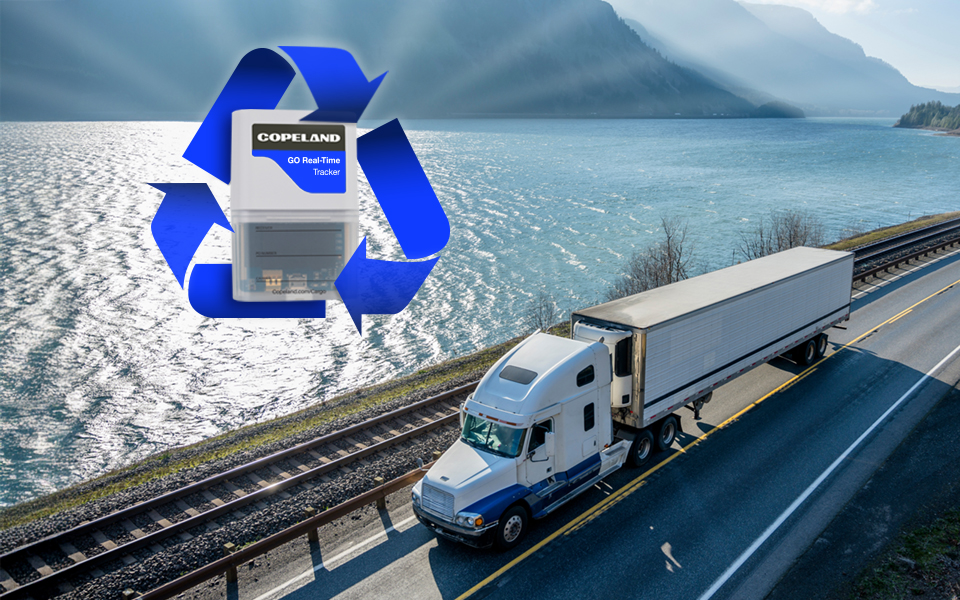*On June 1, 2023 Emerson’s Climate Technologies business became a new standalone company – Copeland. Though our name has changed, we are building on more than a century of HVACR innovation and industry leadership, and Copeland continues to offer the same products, industry stewardship, and learning opportunities you’ve grown to trust. Information found on this webpage posted before June 1, 2023 may contain our old name or branding, but you can be at ease knowing it was created with the knowledge and expertise of Copeland.
As environmental regulations and sustainability initiatives drive the shift toward refrigerants with lower global warming potential (GWP), food retailers are looking more closely at CO2 (refrigerant name R-744). But transitioning to a refrigeration strategy that utilizes CO2 transcritical booster systems will require technologies that maintain CO2 system efficiencies in warmer climates. In a recent article that appeared in R744, I explored how Emerson partnered with Zero Zone to develop a solution that overcomes these challenges. To view the full article, click here.

From an environmental perspective, CO2 is a natural refrigerant with zero ozone depletion potential (ODP) and a GWP of 1 — making it a leading alternative to higher-GWP hydrofluorocarbon (HFC) refrigerants. Although these characteristics are appealing to grocery chain operators, their primary refrigeration system requirement is to provide the reliable cooling that supports food safety and freshness.
Overcoming high ambient temperature concerns
As a leading manufacturer of refrigerated display cases and refrigeration systems for food retail and commercial operations, Zero Zone set out to create CO2 transcritical booster systems that meet retailers’ sustainability and reliability goals. To help them develop a solution for a retailer’s outlet in Joplin, Mo., Zero Zone tapped Emerson — its long-time product development partner — for its deep experience in CO2 compression technologies and system components.
A key enabling feature is the use of an adiabatic gas cooler that is designed to operate in high ambient temperatures and keep the CO2 refrigerant below its critical point for as long as possible. The adiabatic gas cooler rejects the heat load from all the refrigerated cases within the CO2 transcritical booster system.
During warmer periods, air entering the finned heat exchangers is pre-cooled to a temperature approaching the wet bulb temperature via wetted adiabatic cooling pads. This pre-cooling process dramatically improves refrigeration efficiency without having to spray water mist onto the finned heat exchanger surface.
Leveraging Emerson compression, controls and components
Another unique aspect of CO2 transcritical booster systems is their use of only R-744 for both medium- (MT) and low-temperature (LT) loads. Zero Zone’s CO2 rack refrigeration system features three Copeland™ CO2 transcritical semi-hermetic compressors, two Copeland ZO scroll compressors and one digital scroll compressor that provides 20–100% capacity control over system suction pressure. In addition, the lead CO2 transcritical compressor operates with the assistance of a variable-frequency drive (VFD) to enable variable-capacity modulation. Copeland’s CO2 compressors are designed to manage CO2’s high-pressure requirements and benefit from its thermodynamic properties.
To oversee the operation of the CO2 transcritical booster system — which includes managing 12 electronic case controls and optimizing the facility’s overall energy management profile — Zero Zone installed Emerson’s E2 supervisory control. The E2 facility control is part of Emerson’s portfolio of facility management and refrigeration control devices, including Emerson’s new Lumity™ E3 supervisory control with an integrated touch-screen display — which are designed to improve CO2 transcritical booster performance in multiple ways:
-
- Controls the variable speed of the fans on the adiabatic gas cooler in response to operating conditions
- Manages MT and LT compressors by controlling suction pressure variations to enable tight case temperature control and lower energy consumption
- Controls the temperature difference on the gas cooler and provides visibility into the operation of the high-pressure controller, enabling the monitoring of gas cooler and flash tank pressures, as well as the operation of high-pressure and bypass valves
- Provides complete oil management control of all CO2 refrigeration compressors
- Communicates with and captures information from individual case-control units
- Provides complete control of building HVAC and refrigeration systems, and supports the retailer’s energy and maintenance reduction strategies
- Enables access from anywhere (mobile, tablet or PC) via a web-based user interface (UI)
The system also utilizes Emerson’s CO2 high-pressure controller, which provides a variety of system management functions, including:
-
- High-pressure and flash gas bypass valves directly based on the gas cooler outlet temperature, as well as the pressure of the receiver
- Subcritical and transcritical modes of operation based on temperature input
- High-pressure valve to control constant sub-cooling during subcritical operation and ensure optimum efficiency during transcritical operation
- Communication with the E2, which allows users to manage and monitor all aspects of the high-pressure controller
All the Emerson controls are designed to integrate seamlessly with each other and with the system’s electronic expansion valves (EEVs), enabling real-time visibility to various aspects of refrigeration system status.
Preparing for wider CO2 adoption
Today, the retailer’s Joplin store is operating efficiently and effectively on the CO2 transcritical booster system provided by the Zero Zone and Emerson partnership. This installation is a proof-of-concept for how manufacturers are overcoming end user concerns over CO2’s operating pressures, maintenance levels and energy efficiency. Emerson CO2 technologies helped to ease those concerns for Zero Zone and their retail customers.
As we expect to see a significant increase in CO2 system adoption in the U.S. over the next few years, Emerson is committed to supporting our original equipment manufacturer (OEM) and end user partners to drive further CO2 system innovations.

Recycling Program Contributes to Supply Chain Sustainability
Copeland Is Your Partner for a Greener Supply Chain Throughout the perishable food supply chain,...
Industrial Heat Pumps Deliver Sustainability, Lifecycle Benefits in Food and Beverage Industry
The food and beverage industry faces increasing pressure to reduce scope 1, 2 and 3 emissions. In...
10 Innovations Transforming Retail Operations
*On June 1, 2023 Emerson’s Climate Technologies business became a new standalone company –...
